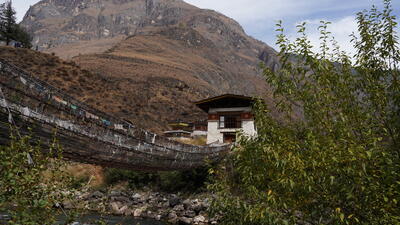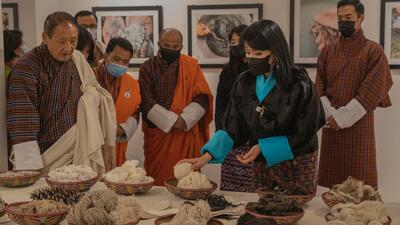
Textile sector benefits from stronger market linkages
“I am happy to be knowledgeable about the global market. I am proud of our products from rural areas that are now being sold abroad. To know that our product is in some house very far from here is fantastic. As we are more aware of techniques and new product designs, we will continue to explore new markets,” says Namkha Wangmo, Chairperson, Thongsa Weaving Community.
Based in Pemagatshel, the Thongsa Weaving Community and their women artisans previously only wove traditional kiras and produced ghos for the local market. As these products were oversupplied, the prices were low.
Life changed for the community soon after being associated with the European Union funded EU-Bhutan Trade Support project, implemented by ITC and in collaboration with the Agency for Promotion of Indigenous Craft (APIC).
Through APIC, the project has imparted training in natural dyeing processes and techniques, product design, curating collections, product quality for export, how to cost and price products for sale, and other relevant topics.
The project has been supporting the textile handicraft sector in Bhutan in developing “high value, low volume” niche collections with a special focus on establishing market linkages and branding in order to strengthen production and trade along the handicraft value chain.
The women artisans are now able to use these skills and knowledge to curate and weave new products with a contemporary weaving style and pattern.
Namkha believes that the project helped them to expand both their skills and the quality and variety of the products they make which now include hand woven cushion covers, bed and table runners, throws and shawls, all for an entirely new market segment.
Weaving contemporary designs entails learning new methods such as increasing the thickness of yarns to give body and texture to the fabrics.
“In the past, we only used traditional dyeing and colouring techniques. With the new skills, we are able to utilize both the conventional and contemporary methods which has given us the ability to expand our products for different markets,” she said reflecting the progress.
The costing and pricing training was instrumental for their group as it showed the members that they needed to factor their time, labour and skills into the cost of the products which in turn increase their income.
These skills have proved to be key for community growth. Namkha shares her skills through demonstrations and coaching to benefit anyone who is interested in weaving. She is hopeful that the group, now well known for successfully supplementing much needed income for its members, will continue to attract youth and women.













